Ladybugs (Coccinellidae) are considered some of the most attractive beetles. These small beetles are known as ladybirds in Europe or lady beetles in other areas of the world.
Some cultures associate them with good luck.
Even some farmers appreciate ladybugs because they often eat insects that are crop detrimental.
Ladybugs are very popular because they don’t look threatening. The friendly red and black body of ladybugs makes them appear friendlier compared to other types of bugs and insects.
The popularity of the Seven-spotted ladybug (one of the most popular ladybugs) has been associated with culture. It has been featured in movies, stories, and poems.
The friendly look of ladybugs is not unique. There are a few bugs that look almost the same.
Small differences are often seen in the shape of the body. But other bugs can look very similar to ladybugs when it comes to coloring.
Table of Contents
What are ladybugs?
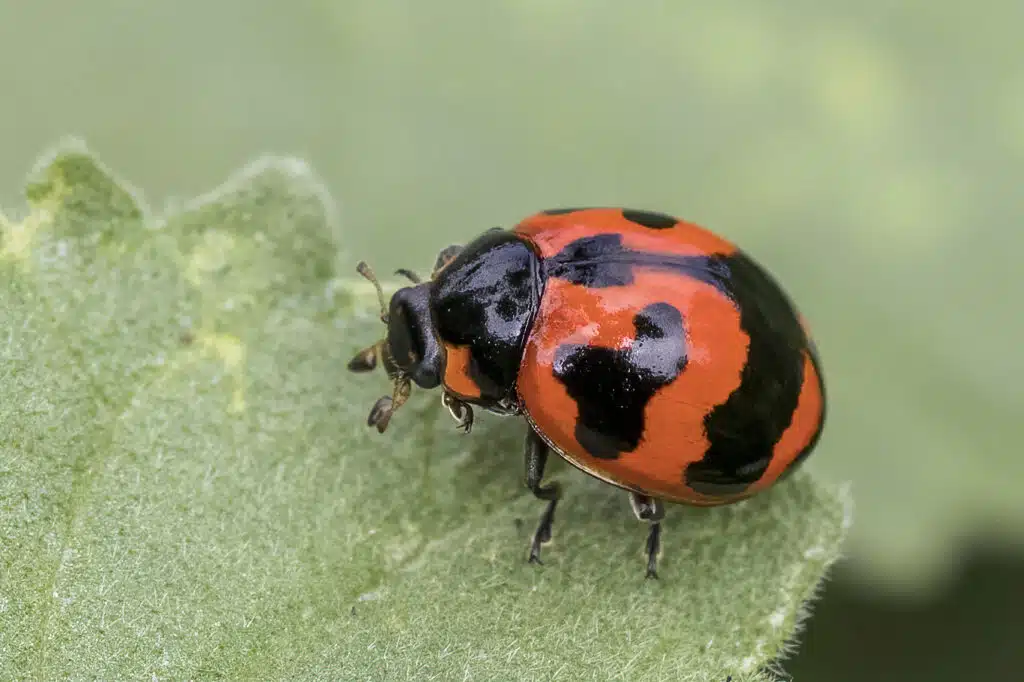
Ladybugs are known predators of aphids and some scale insects. They are part of a group of small beetles that grow to a body size between 0.8 to 18mm.
Ladybugs are often considered lucky insects in popular culture or beneficial insects as they eat herbivore aphids on crops.
Ladybugs sometimes lay eggs directly on agricultural pests so they serve as food for offspring.
There are over 6.000 ladybug species around the world. Most are considered beneficial.
Ladybugs can be red, brown, yellow, blue, green, and all types of other colors. This is why many species look almost the same at a first glance.
Other ladybugs are considered pests.
For example, the Mexican ladybug is herbivorous which means it can hurt crops when breeding in large numbers.
ladybug Identification
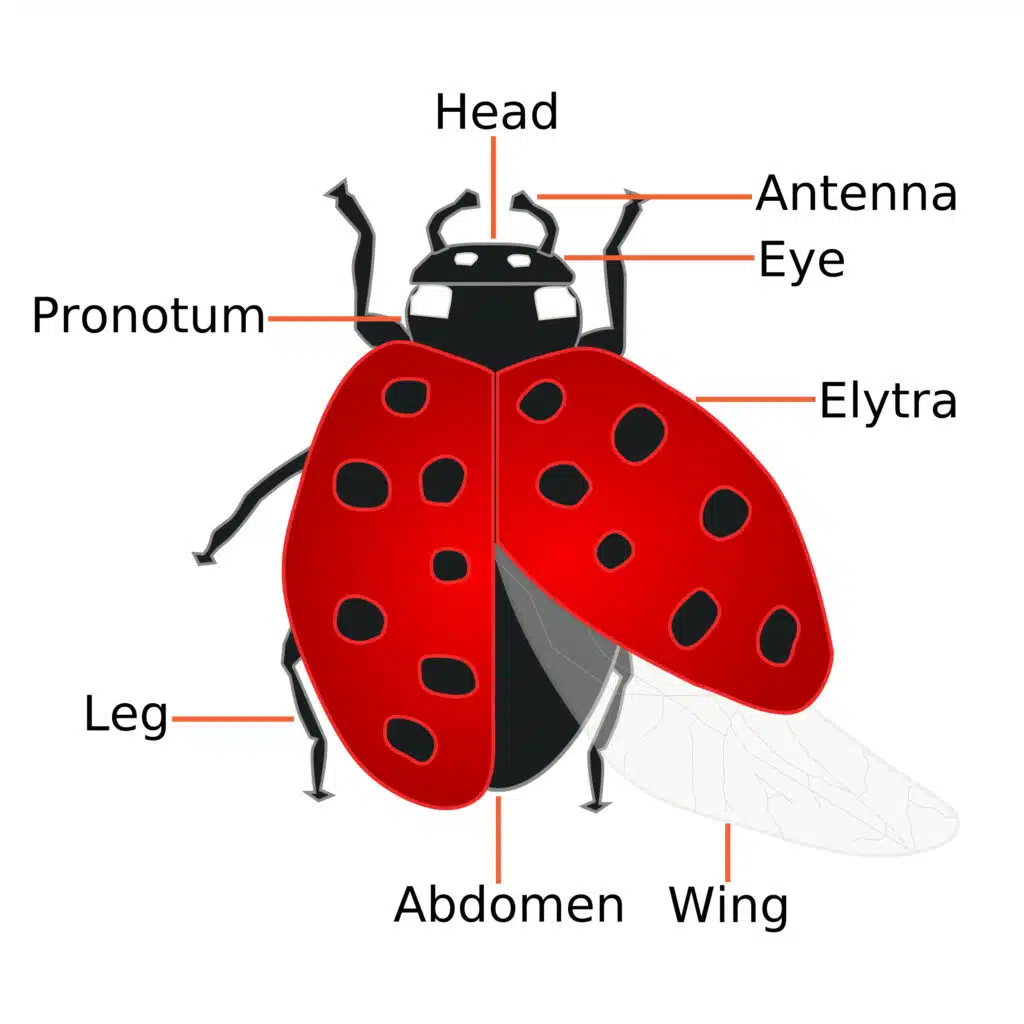
Ladybugs are known for having a short body (up to 0.4inches in length) of a dome shape. Its round back is vividly colored. Marks, stripes, or no marks at all specific to some ladybug species.
The most common type of ladybug is the red-colored ladybug with 7 black spots on the back. It has 7 legs and a small blackhead.
The Seven-spotted ladybug is the most common of the species in North America and around the world.
Other ladybug species with black spots on the back include the orange Ten-spotted ladybug, the yellow 22-spot ladybird, and even the all-blue Steelblue ladybird.
Common ladybugs in the United States:
- Asian Lady Beetle (Harmonia axyridis)
- Seven-spotted Lady Beetle (Coccinella septempunctata)
- Convergent Lady Beetle (Hippodamia convergens)
- Spotted Pink Ladybeetle (Coleomegilla maculata)
- Spotless Lady Beetle (Cycloneda sanguinea)
- Ashy Gray Lady Beetle (Olla v-nigrum)
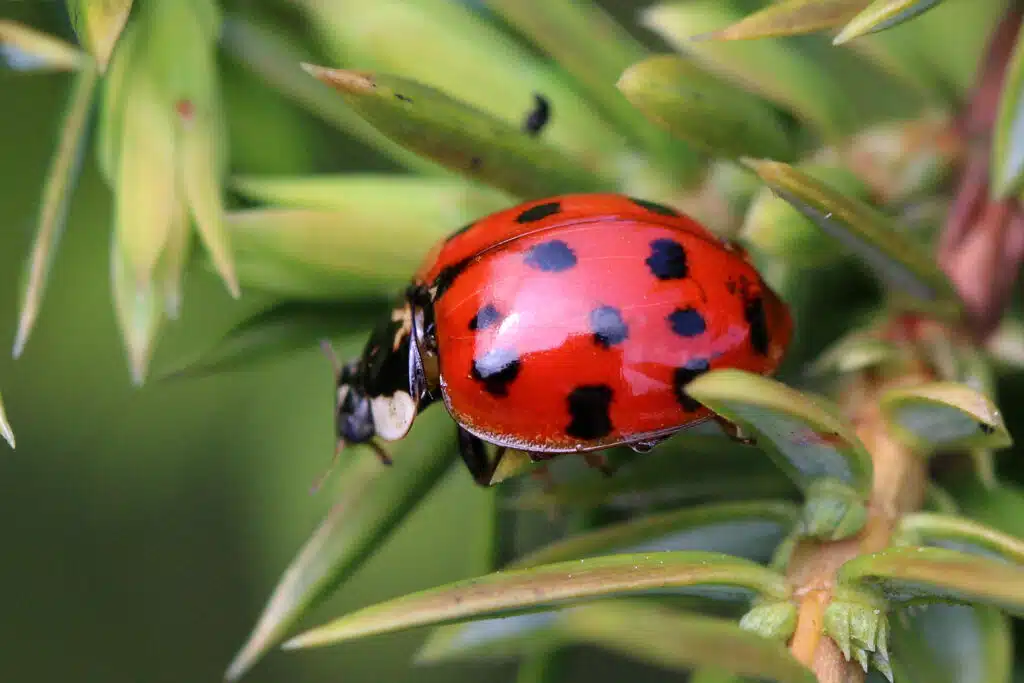
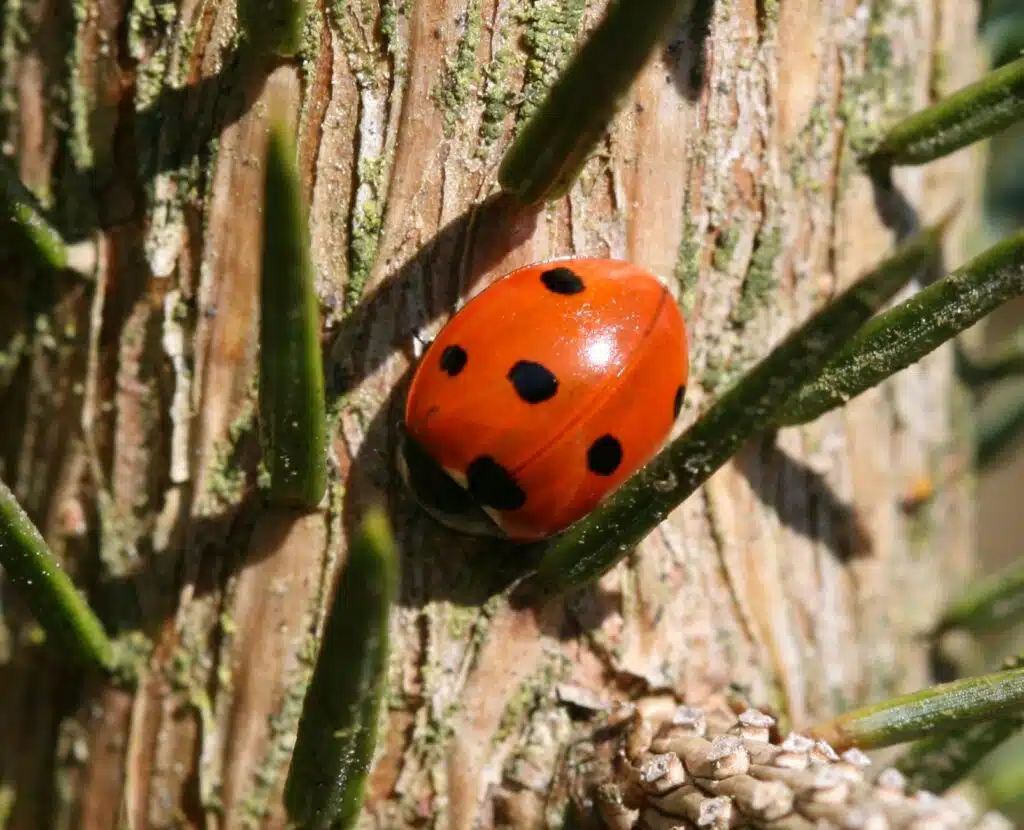
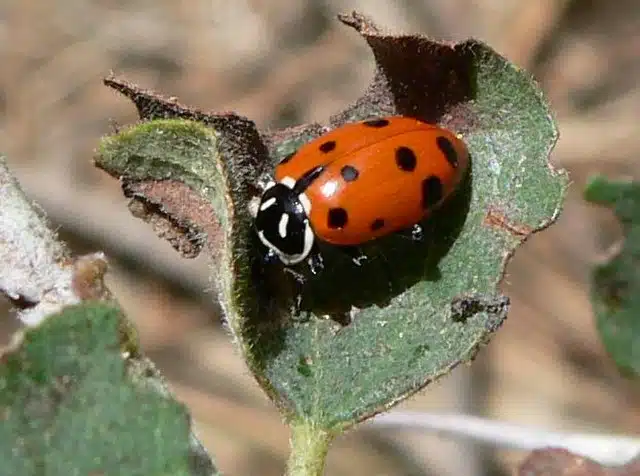
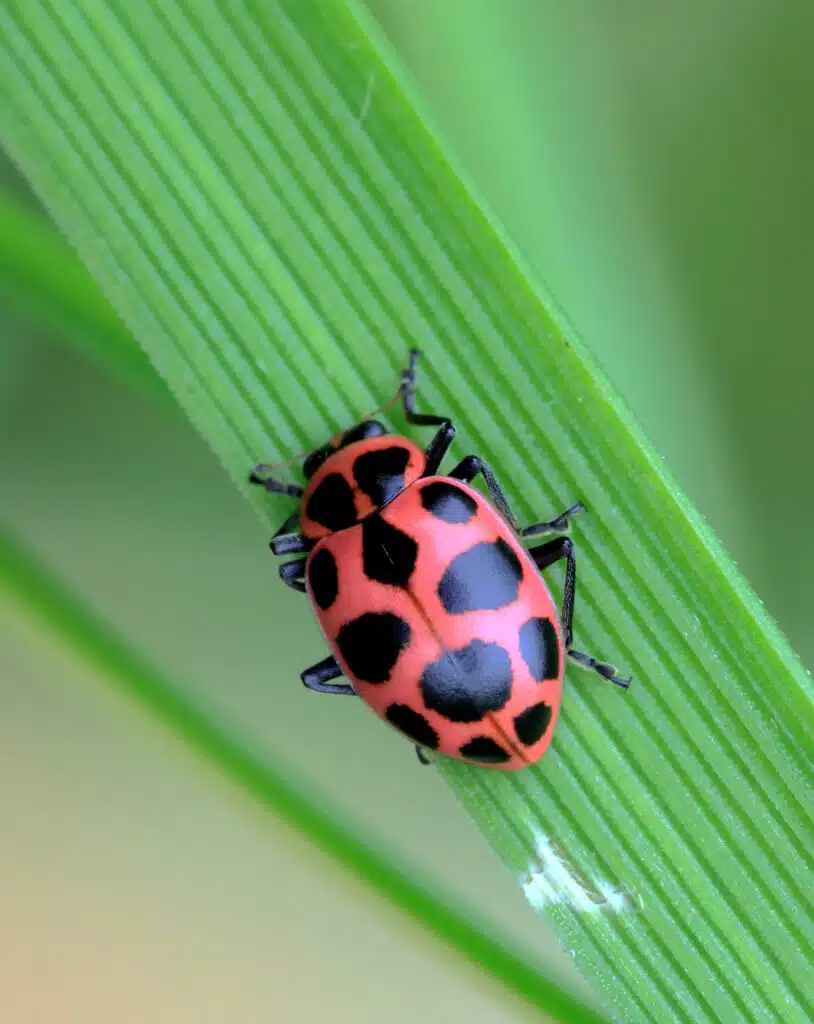
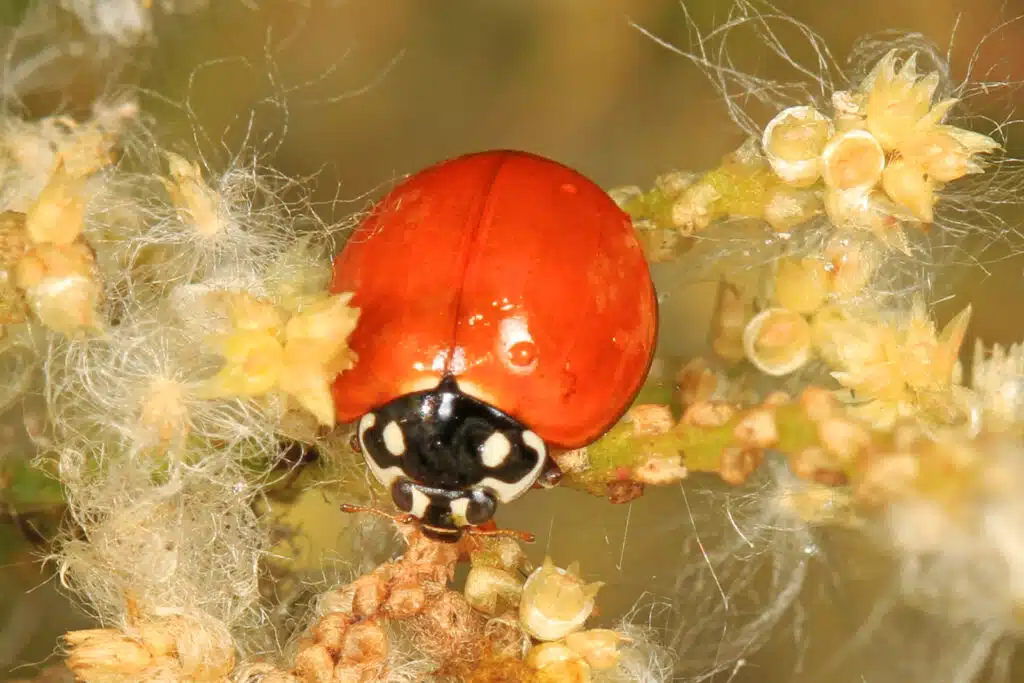
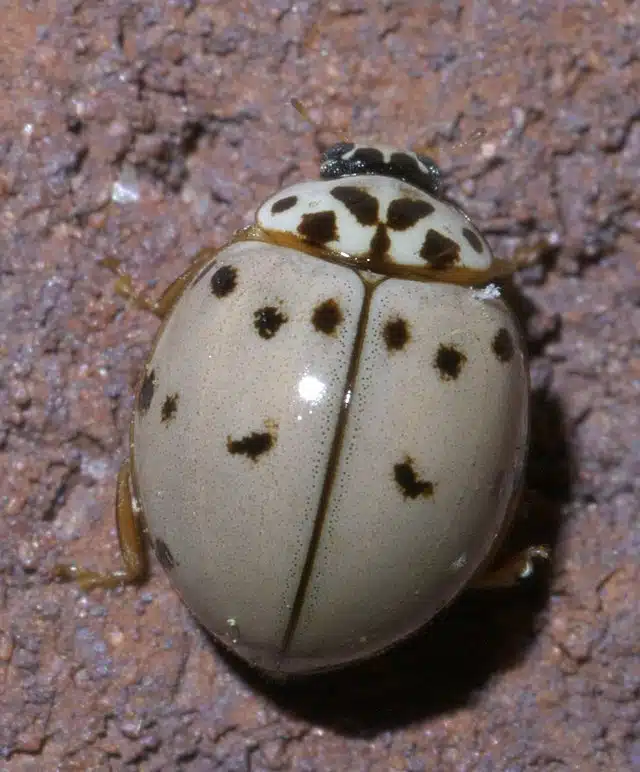
14 Bugs that look like ladybugs
The shape and colors of ladybugs are so popular they are typically confused with other species. However, completely different species of bugs can also look similar to ladybugs.
1. ladybird-mimicking spider
Spiders can look like ladybugs. Spiders of the Paraplectana genus are very similar to ladybugs. These are common in parts of Southern Africa.
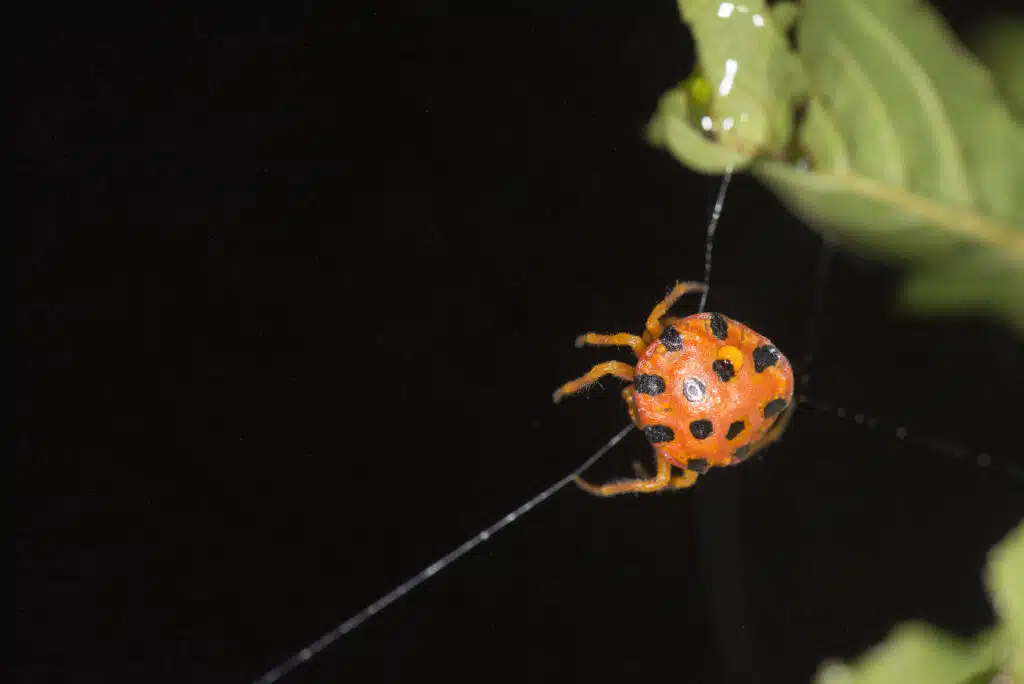
The spiders have a dome-shaped body just like ladybugs. It even resembles turtles as its head is lower than its body.
The spider has an orange-red or a yellow-orange body with black marks. Up to 11 black marks can be distinguished on its back.
Its head has no black marks at all and it has a yellow-orange color. The vividly colored head is the most significant visual difference compared to ladybugs which have a black head.
Another smaller difference that is harder to spot from above is its leg colors. The legs of this spider are also of yellow-orange coloring. Most ladybugs have all-black legs.
2. beetle-mimicking cockroach
Some cockroaches are also similar to ladybugs. Many cockroaches are associated with black and brown coloring, but others resemble ladybugs.
Cockroaches of the Prosoplecta species are known for their similarities with ladybugs.
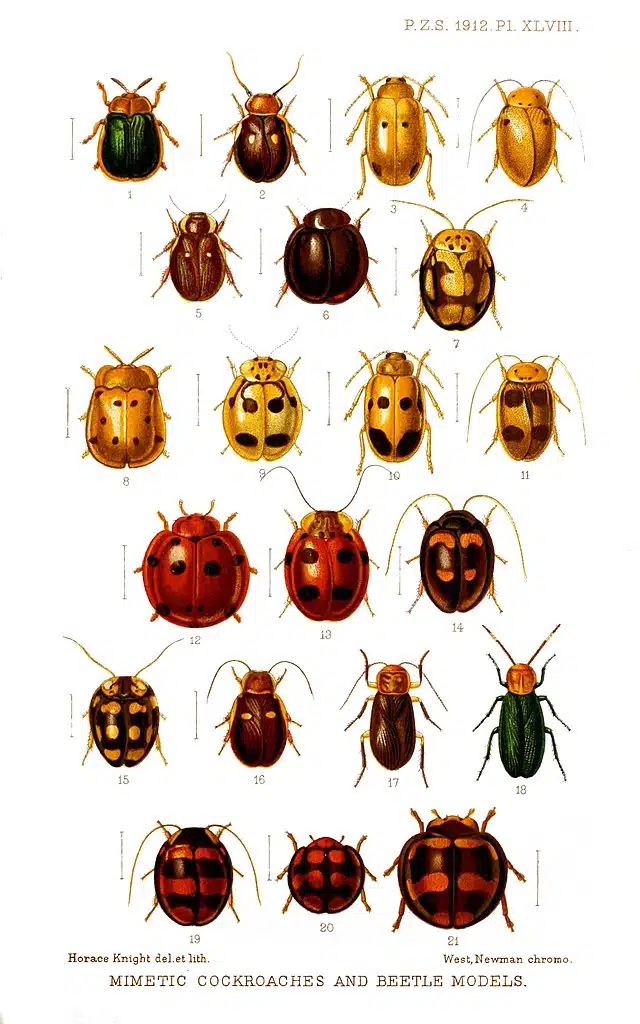
There are 21 species of Prosoplecta species of various colors, all of them resembling ladybugs.
Cockroaches from the Prosoplecta genus mostly resemble the following ladybugs.
- Seven-spot ladybug
Several Prosoplecta cockroaches have red bodies with black spots similar to Seven-spot ladybugs.
- 22-Spot ladybug
The 22-spot ladybugs have yellow and black coloring. Black spots are common on Prosoplecta species.
- Convengert lady beetle
Convergent lady beetles are known for their bright orange bodies. Convergent lady beetles look very similar to the Asian cockroach (from the Prosoplecta species).
- Nine-spotted lady beetle
The Nine-spotted lady is known for a pale orange body with black marks. Pale orange is also common among Prosoplecta roaches.
3. Golden Tortoise Beetle
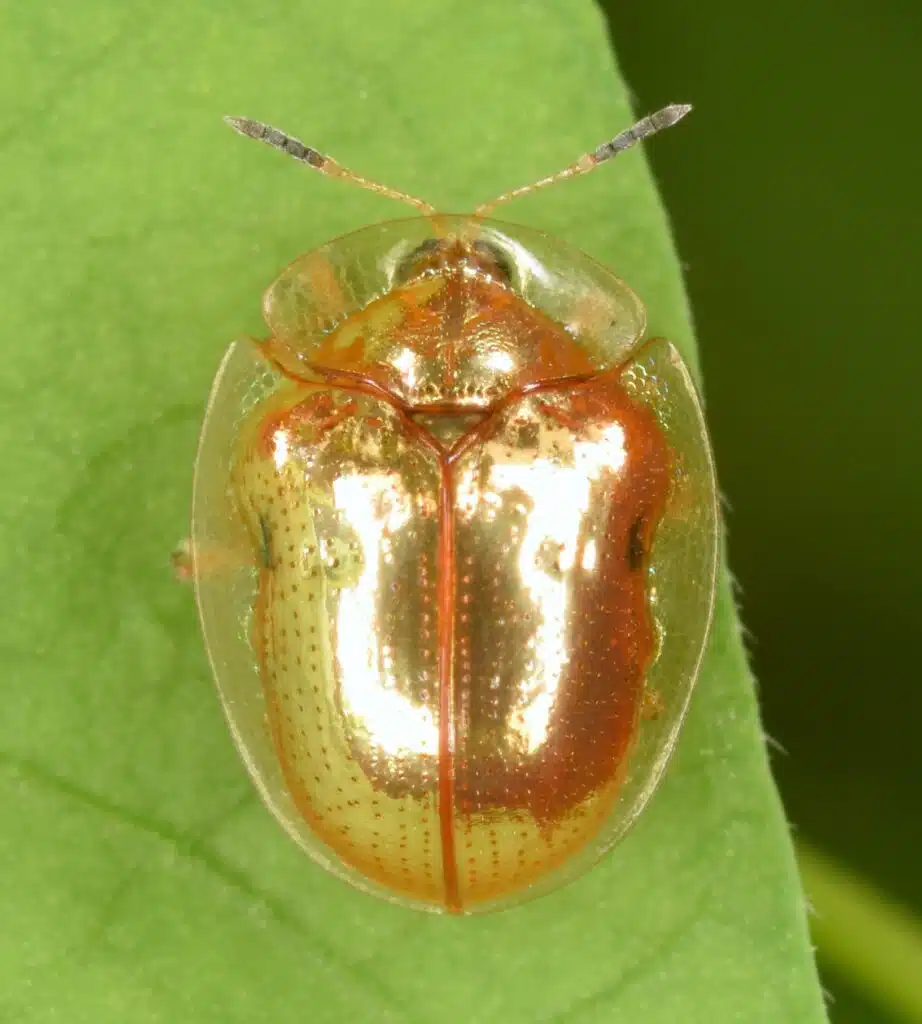
The Golden Tortoise Beetle (Charidotella sexpunctata) is known for its golden color. It resembles ladybugs in size and shape.
It grows up to 7mm and has a dome-shaped body with small black markings.
This species of beetle is mostly known for its shiny golden color, but it can also come in other colors.
Most importantly, this standard golden color can change depending on the situation the beetle finds itself in. This color changes from golden to red-brown during mating.
This color change is also specific to the beetle in the case it senses danger.
The color change from gold-yellow to red-brown also occurs when the beetle hydrates.
4. Argus Tortoise Beetle
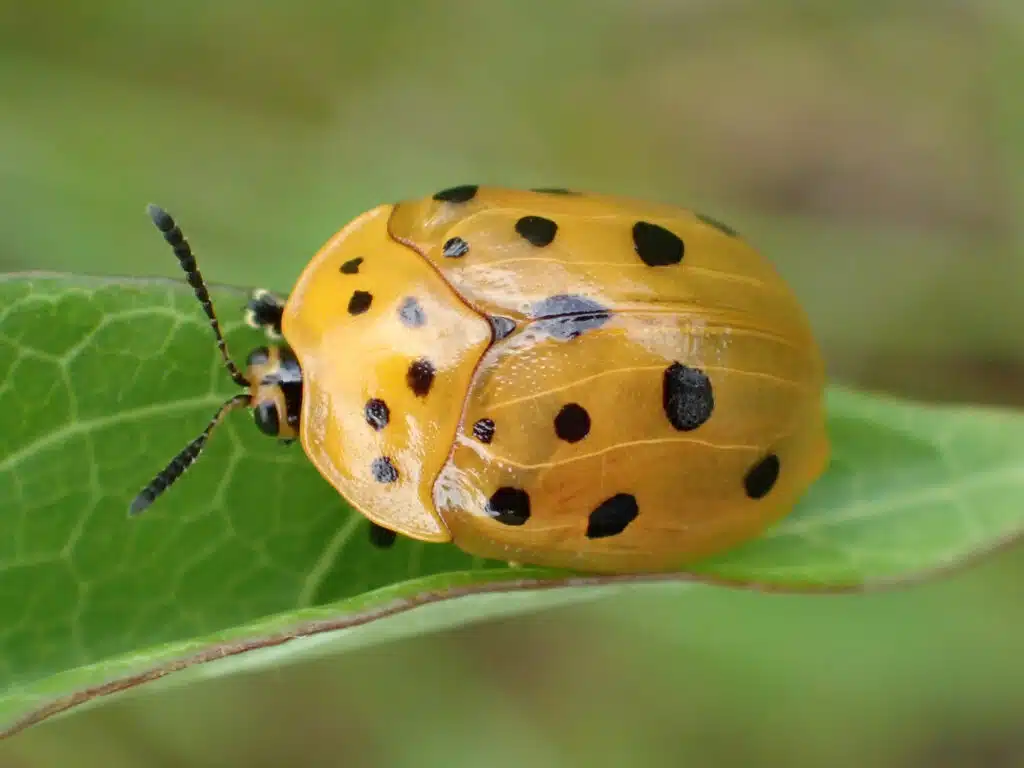
The Argus Tortoise Beetle (Chelymorpha cassidea) comes from the Caribbean. It gets its name from the Greek mythological figure Argus Panoptes, a creature with multiple eyes.
Argus Tortoise Beetles resemble ladybugs in body shape, body size, and markings on the back. These bulbous beetles grow to a maximum size of 0.47 inches.
The species is known for having a dark yellow or yellow-red body with black marks on its back. It resembles ladybugs closely.
It also differs from ladybugs inhabits and physical capabilities. The Argus Tortoise Beetle can expand its head out, similarly to turtles.
5. Mottled Tortoise Beetle
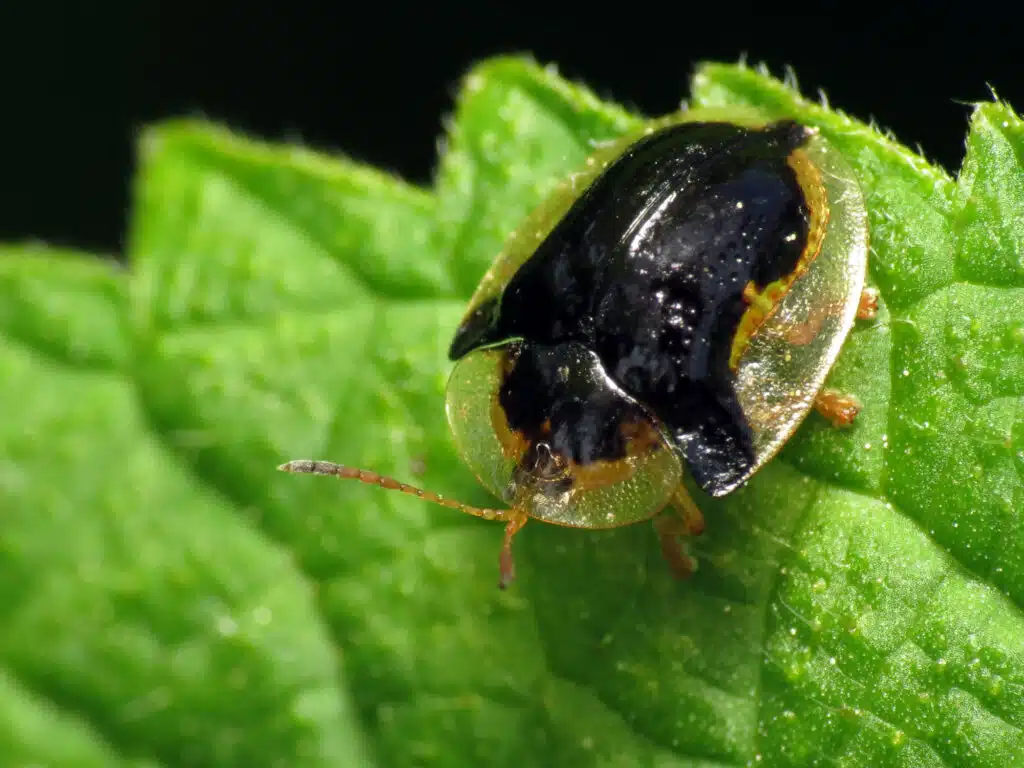
Mostly found in Central and North America, the Mottled Tortoise Beetle (Deloyala guttata) slightly resembles ladybugs.
This beetle is known for having stripe-like markings on its shiny golden back.
It doesn’t have a dome-shaped body like ladybugs as its body has an irregular size that narrows from the head towards the abdomen.
Resemblance to ladybugs is mostly tied to its small head and markings on its back.
6. Spotted Cucumber Beetle
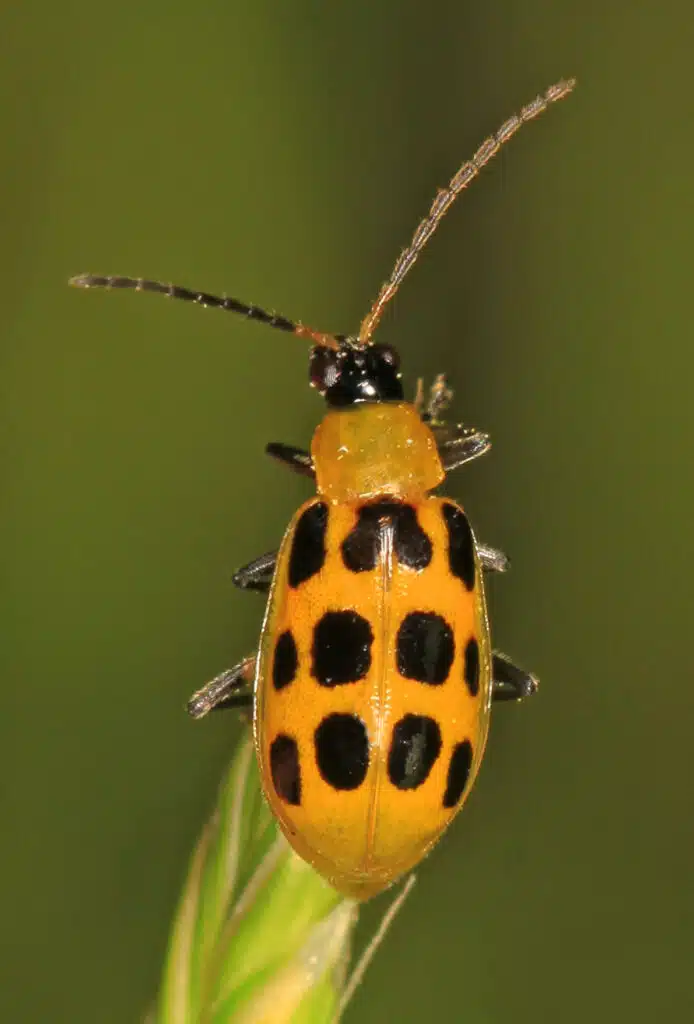
The Spotted Cucumber Beetle (Diabrotica undecimpunctata) is common in cucumber and squash crops. It lays eggs next to these crops that are later used as food.
It resembles yellow ladybugs the most. It has a yellow body with black marks, also specific to ladybugs.
Its small head is black which further resembles the physical traits of ladybugs.
Differences in appearance are mostly small. This bug is known for a longer body compared to the rounder body of most ladybugs.
7. Swamp Milkweed Leaf Beetle
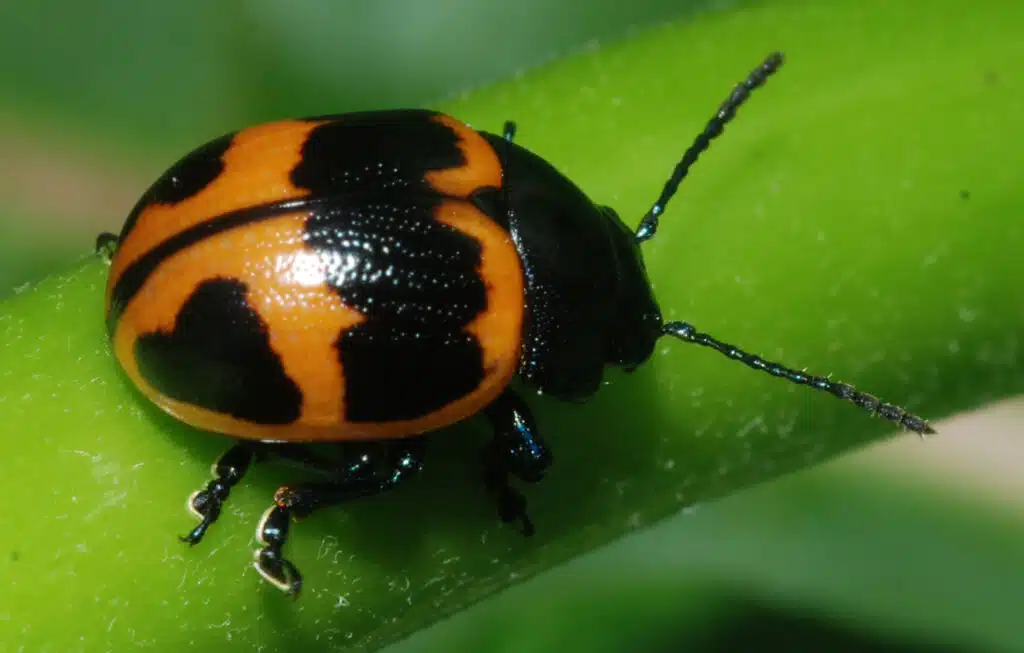
The Swamp Milkweed Leaf Beetle (Labidomera clivicollis) resembles red ladybugs the most. It has a similar dome-shaped body with red (or orange coloring) spotted with black marks.
The black marks on the Swamp Milkweed Leaf Beetle are considerably larger than the black marks on ladybugs.
These insects are also similar size-wise. Both grow up to 0.17mm with good food availability.
8. Larger Elm Leaf Beetle
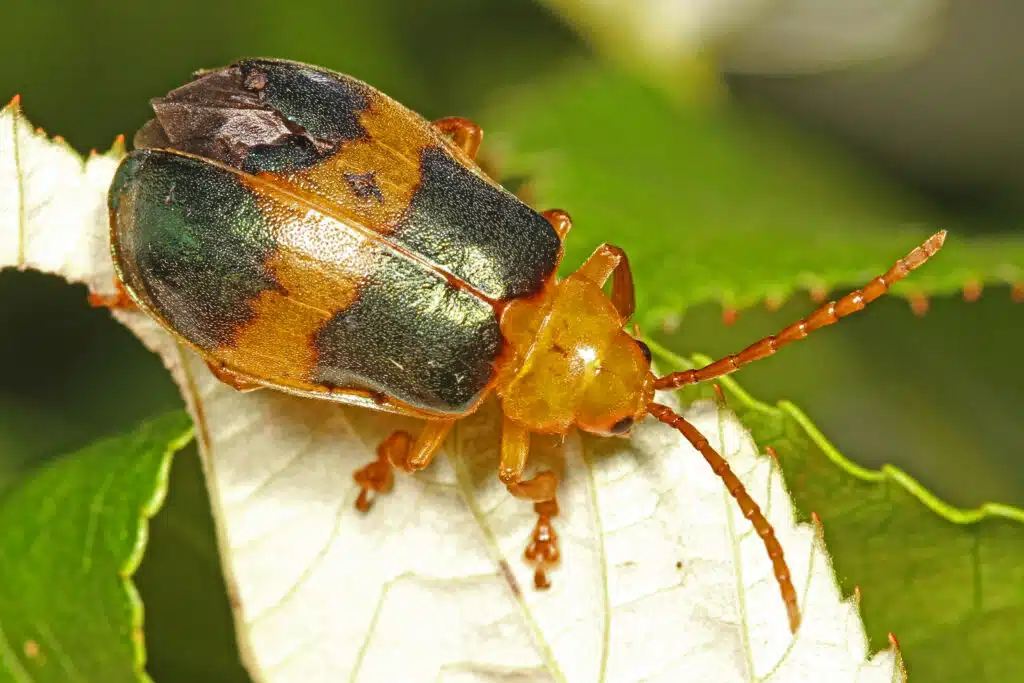
The Larger Elm Leaf Beetle (Monocesta coryli) is commonly seen around forests. They are also common along with pecan and birch trees.
These insects resemble yellow ladybugs. They have a yellow-orange body with 4 large dark spots.
The body shape is similar to most ladybugs but a bit more pear-shaped than dome-shaped.
The larger Elm Leaf Beetle has a wider body towards the abdomen and a narrower body closer to the head.
9. Bean Leaf Beetle
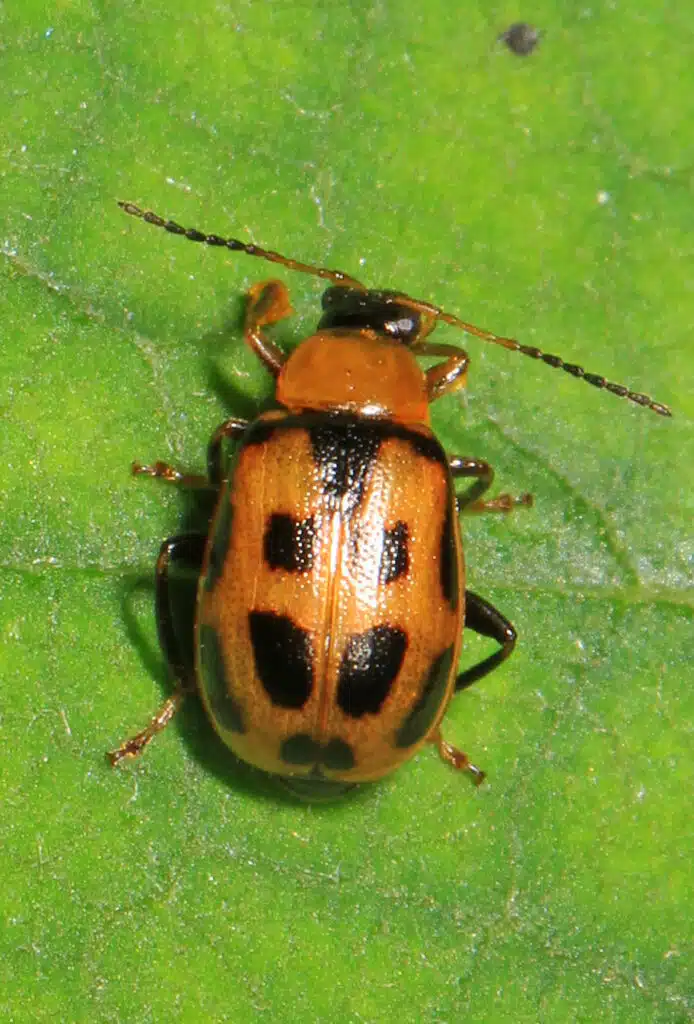
The Bean Leaf Beetle (Cerotoma trifurcata) is mostly found in alfalfa, bean, and soy crops. It can be recognized by its golden color which makes it stand out on green leaves.
The Bean Leaf Beetle resembles many species of ladybugs. It has a short round body of golden coloring with black spots.
There are 4 black spots on its back. Black stripes also run along the margins of the body. The insect is also known for having a small black head, just like ladybugs.
10. Eight-spotted Flea Beetle
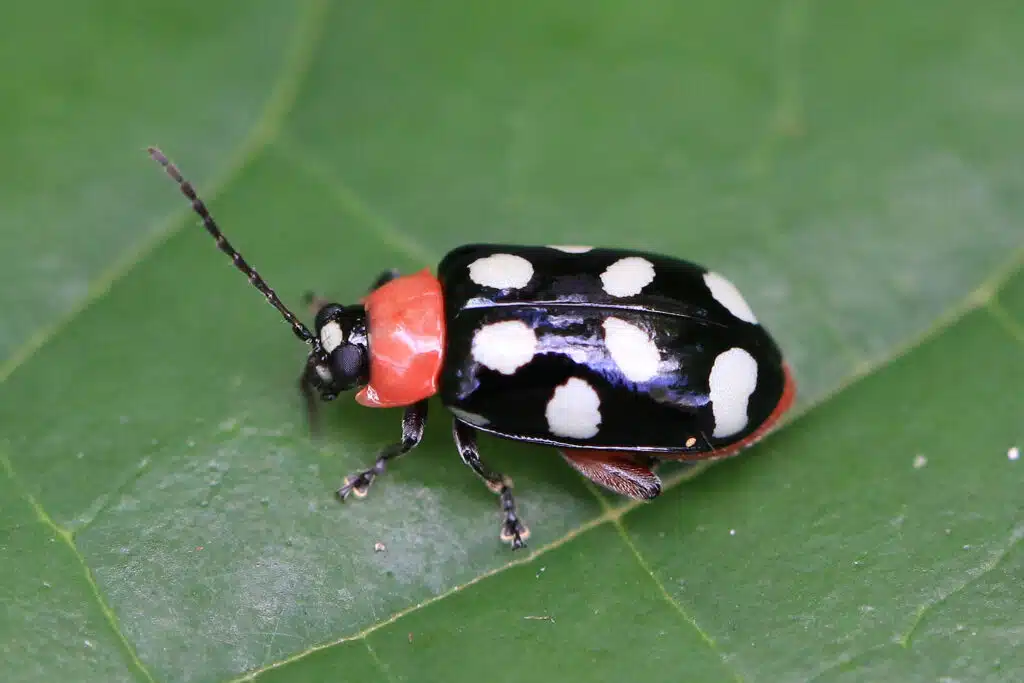
This small insect resembles dark-color ladybugs. It (Omophoita cyanipennis) can be recognized by its black body and white spots.
Its body is elongated compared to the typical dome body shape of ladybugs.
The beetle is known for having a shiny black body with black and white antennas. Its head is also black and small, similarly to the shape of ladybugs’ heads.
The head typically has one round white mark in the middle.
Its elongated body features 8 large white marks. These are of irregular size.
The species is found in the US in states such as Texas but also in Central and South America.
11. Ladybird Bug
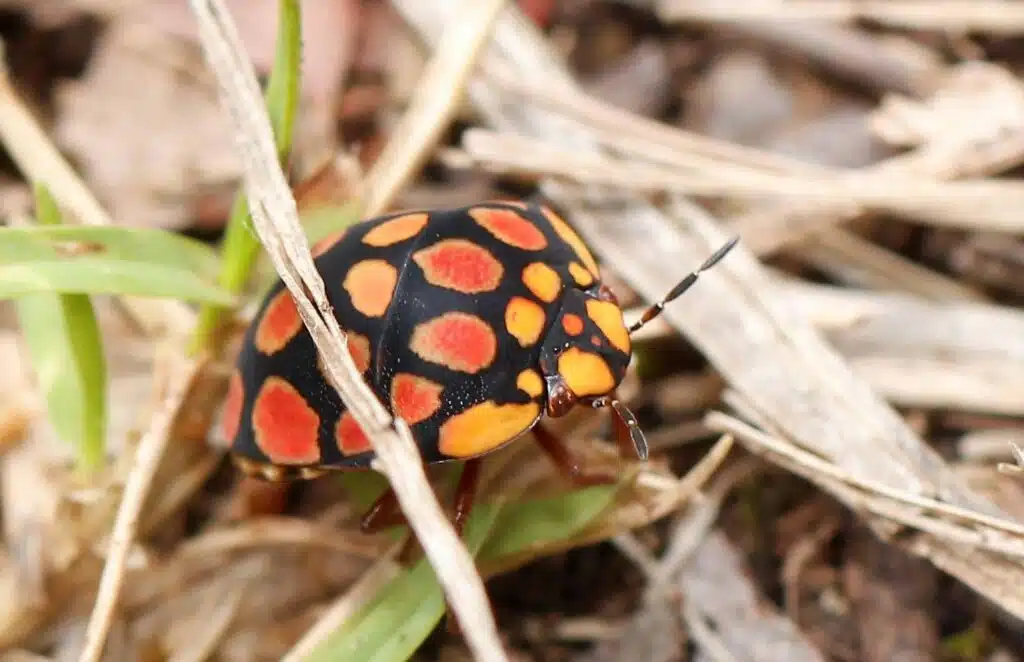
The Ladybird bug (Steganocerus multipunctatus) is common in sub-Saharan climates. It also appears on cotton fields commonly.
It resembles the classic red and black ladybird through shape and coloring. Instead of having red and black colors, it has orange and black coloring.
Multiple orange marks are seen on its black body. Its head is also black with 2 large orange marks.
Its antennas have black and orange coloring.
Unlike the classic ladybug, this beetle is known for having a considerably wider body. It also has a dome-shaped body but it’s a bit flatter compared to other ladybugs.
12. Grapevine Beetle
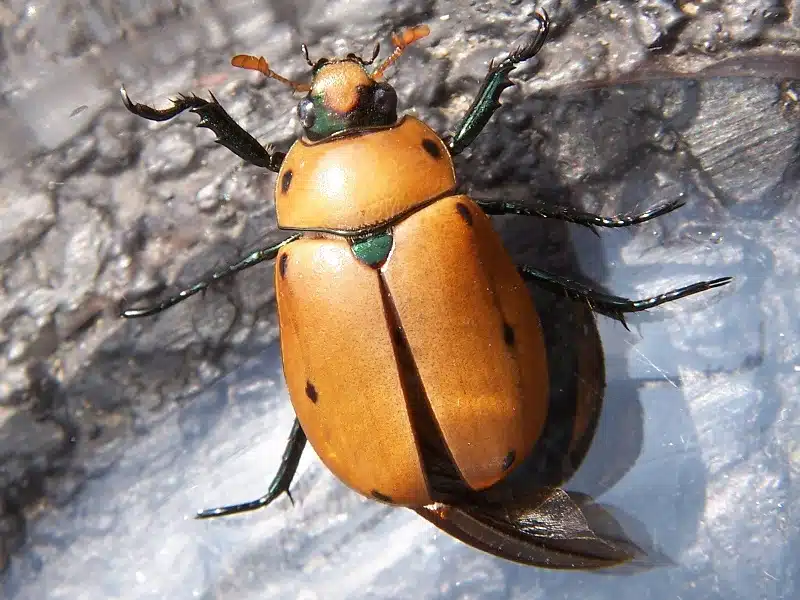
This beetle (Pelidnota punctata) is known for having an off-yellow color with 4 small black marks.
Thin black lines divide the elytra. This beetle is also known for having an off-yellow head with a large black mark.
Its legs are all-black, similar to most types of ladybugs and their legs.
13. False Ladybird
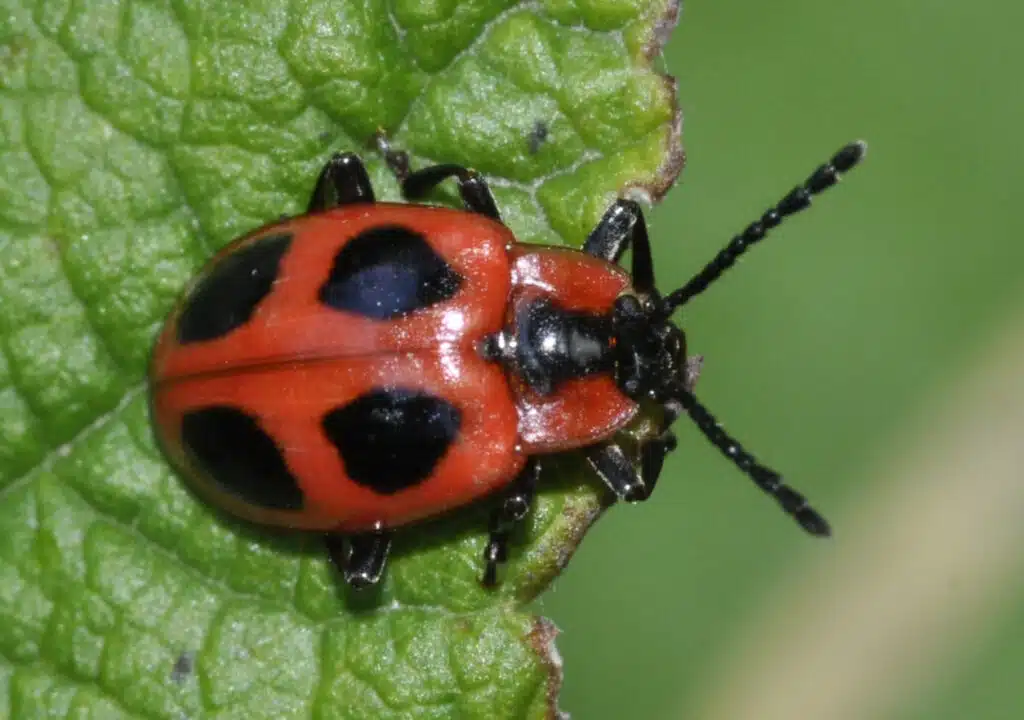
The False Ladybird (Endomychus coccineus) is the bug that looks like a ladybird the most, as its name suggests.
The main difference between the False ladybird and an actual ladybird is the shape of its body. False ladybirds have flatter bodies while ladybirds have dome-shaped bodies.
There are a few differences in coloring as well. A False ladybird has larger black marks on its body.
The wider black marks on its body make it a dual-color bug compared to ladybugs which are mostly red with smaller black marks.
False ladybugs also have red stripes that run along their body and one red stripe that runs along their mid-body.
Ladybirds also have different habitats and different food preferences. These bugs mostly eat wood mushrooms from birch trees.
14. Asian lady beetle
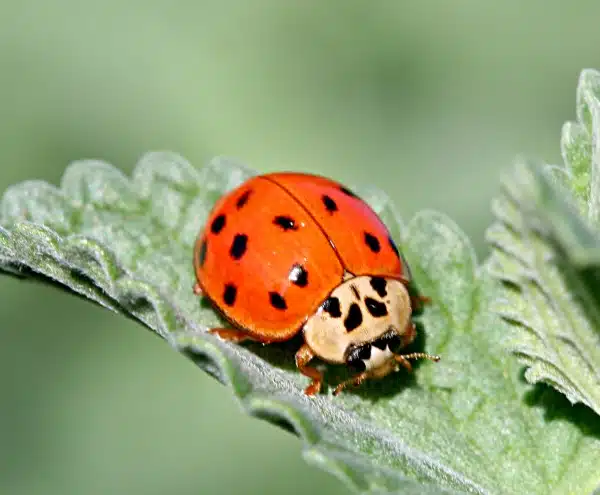
The Asian lady beetle is often confused with ladybugs due to its red and white coloring. However, there are ways to tell these species apart.
First, the Asian lady beetle resembles ladybugs by its red round body. It also has black markings and a black head with white markings.
Secondly, the Asian lady beetle has a wider body that’s also flatter compared to the dome-style body of ladybugs.
Further habitat and temperament differences set these species apart.
For example, the Asian lady beetle is seen as a house pest as it often seeks warm shelter inside. Ladybugs don’t make their way inside of the house.
The Asian lady beetle is also known to attack by biting. Ladybugs don’t bite people.
These species can also be differentiated by the shape and coloring of the head by those still struggling to tell them apart.
The Seven-spot ladybug is the most common. It has an all-black head that is very small about the rest of its body.
The Asian lady beetle has a wider and longer head. While also black, it features white markings that make its head look different from the head of ladybugs.
Summary
Bugs that look like ladybugs are common. Most can be hard to differentiate.
An easy way to make a distinction between an actual ladybug and a bug that looks like a ladybug is to look at the shape of the body.
Ladybugs have rare dome-shaped bodies which are rare among other similar bugs which tend to have flatter bodies.
The shape and color of the head are also parts that help differentiate real ladybugs from other insects that look like ladybugs.
The Seven-spotted ladybug has a black head of small proportions. Most similar species either have a larger head or they have a black head with bright markings.